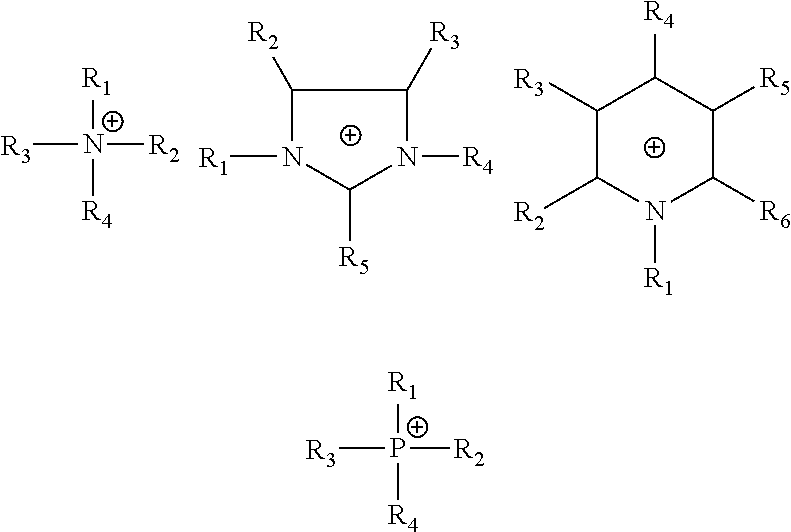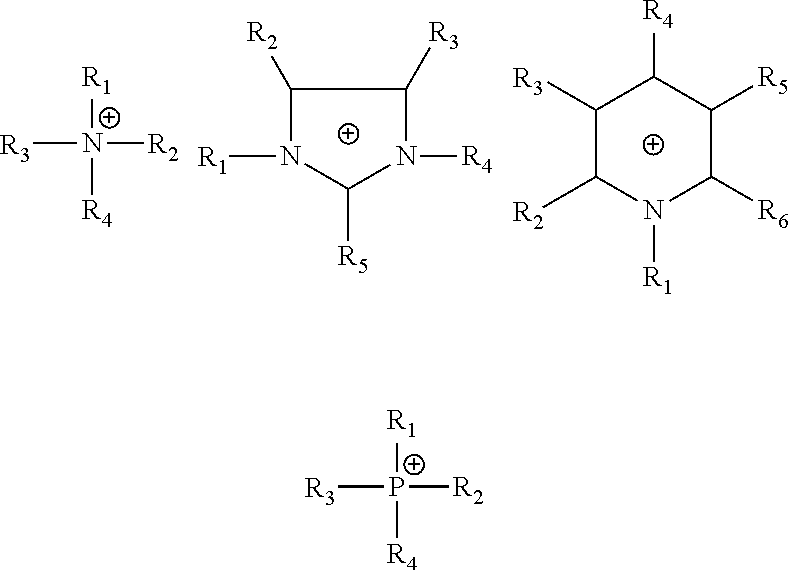Method for preparing isocyanates by liquid-phase thermal cracking
a technology of liquid phase and thermal cracking, which is applied in the preparation of isocyanic acid derivatives, physical/chemical process catalysts, organic compounds/hydrides/coordination complex catalysts, etc., can solve the problems of reducing yield, critical and difficult processes, environmental pollution and personnel injuries, etc., and achieves high thermal stability of ionic liquid.
- Summary
- Abstract
- Description
- Claims
- Application Information
AI Technical Summary
Benefits of technology
Problems solved by technology
Method used
Image
Examples
example 1
[0044]Under a condition of 65° C. water bath and magnetic stirring, 50 g of Zn(NO3)2.6H2O was dissolved into 100 mL distilled water. After complete dissolution, 20 g of concentrated nitric acid and 55 g of citric acid were added and stirred until gelatination occurred. After aging for 24 h, the mixture was washed with distilled water until the pH value approached to 7, then dried at 80° C. under vacuum for 5 hours, and finally, calcined in a muffle furnace at 400° C. for 6 hours to obtain a catalyst A. The catalyst A, i.e. the superfine powders of ZnO, comprised 100 wt % of ZnO.
example 2
[0045]Under a condition of magnetic stirring or ultrasonic stirring, 79.7 g of La(NO3)3.6H2O and 5.48 g of Zn(NO3)2.6H2O was dissolved into 240 mL distilled water. After complete dissolution, the solution was added dropwise with 1 M NaCO3 aqueous solution until the precipitation was completed and the pH value of the supernatant was 7. After aging for 1-2 hours, a precipitate was filtrated and dried in a drying oven at 120° C. for about 20 hours, and then calcined in a muffle furnace at 500° C. for 6 hours. After being cooled to room temperature, it was ground in an agate mortar for 30 min to obtain a catalyst B. The catalyst B, i.e. the superfine powders of ZnO / La2O3, comprised 96 wt % of La2O3 and 4 wt % of ZnO.
example 3
[0046]Under a condition of magnetic stirring or ultrasonic stirring, 79.7 g of La(NO3)3.6H2O, 5.48 g of Zn(NO3)2.6H2O and 3.3 g of Cd(NO3)2.4H2O was dissolved into 240 mL distilled water. After complete dissolution, the solution was added dropwise with 1 M NaCO3 aqueous solution until the precipitation was completed and the pH value of the supernatant was 7. After aging for 1-2 hours, a precipitate was filtrated and dried in a drying oven at 120° C. for about 20 hours, and then calcined in a muffle furnace at 600° C. for 6 hours. After being cooled to room temperature, it was ground in an agate mortar for 30 min to obtain a catalyst C. The catalyst C, i.e. the superfine powders of ZnO—CdO / La2O3, comprised 92 wt % of La2O3, 4 wt % of ZnO and 4 wt % of CdO.
PUM
| Property | Measurement | Unit |
|---|---|---|
| pressure | aaaaa | aaaaa |
| temperature | aaaaa | aaaaa |
| particle diameter | aaaaa | aaaaa |
Abstract
Description
Claims
Application Information
 Login to View More
Login to View More - R&D
- Intellectual Property
- Life Sciences
- Materials
- Tech Scout
- Unparalleled Data Quality
- Higher Quality Content
- 60% Fewer Hallucinations
Browse by: Latest US Patents, China's latest patents, Technical Efficacy Thesaurus, Application Domain, Technology Topic, Popular Technical Reports.
© 2025 PatSnap. All rights reserved.Legal|Privacy policy|Modern Slavery Act Transparency Statement|Sitemap|About US| Contact US: help@patsnap.com


